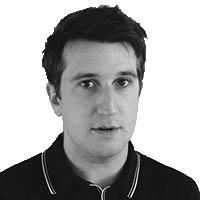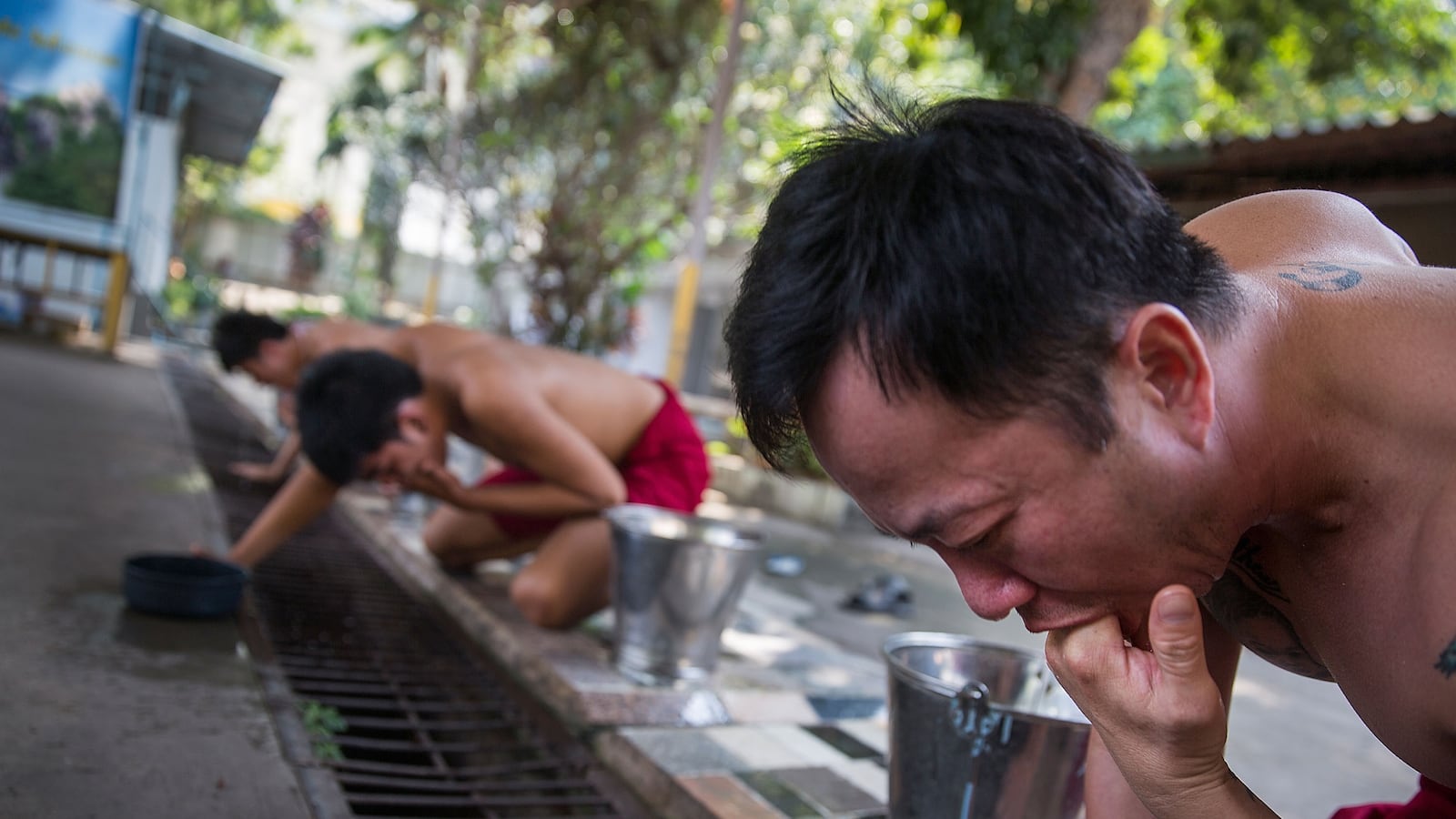In America, the widely unregulated industry of treating addiction is a $35 billion dollar per year enterprise—one that’s been dubbed the wild, wild west of healthcare. What this means for you, the consumer, is paying enormous sums of money for potentially faux-methods based on nothing more than anecdotal assurance that they’ll work.
So why not fly to a secluded monastery in Thailand and vomit into a drain trench for free?
That I can even pose this question means there’s ample space to examine Eastern and Western methods of substance abuse treatment. In Malibu, for example, you can spend $80,000 a month and embark on a therapeutic voyage aboard the rehab’s personal yacht. This is called “ocean therapy.” There is also “Equine Assisted Therapy,” which involves making friends with horses. For a dose of Scientology-lite, you can enroll in Narconon, which is notorious for its bizarre methods—the most well known entails the ingestion of obscene doses of niacin followed by hours of sitting in a sauna.
But popular among Australian meth and heroin users is a rehab in Thailand known colloquially as The Vomit Temple—a detox with a Buddhist slant.
Wat Thamkrabok, the center’s actual name, is 100 percent free and has been since it opened in 1959. The detoxification phase, considered radical among Westerners, consists of drinking an herbal mixture at 3pm for the first five days, the result of which is a relentless deluge of vomit.
Western treatment providers’ opinions on the vomit detox vary.
David Cohen, vice president of substance use and co-occurring disorder programming at Insight Behavioral Health in Chicago, is wary of Wat Thramkrabok’s method. “It appears to be a mixture of meditation, service work, and eliminating negativity and toxicity from your life,” he tells The Daily Beast. “While in theory this sounds wonderful, there can be lasting negative consequences to your organs by eliminating essential nutrients through vomiting.”
“While this radical treatment may work for some,” he adds, “it should be used very sparingly, if at all.”
Dr. Richard Juman, a clinical psychologist who specializes in addiction, had a slightly different reaction than Cohen. “I think that almost any type of extreme experience or intervention—something that totally shakes your foundation, knocks you off of your routine—can be highly impactful,” he says.
But, Dr. Juman says, “Whether any of these types of experiences would lead to a stable, ongoing recovery is an entirely different question, though.”
According to Luang Poh Charoen, Buddhist monk and co-founder of Wat Thamkrabok, the physical detoxification of a substance (i.e. vomiting) is only 5 percent of the healing process. The remaining 95 percent is an ongoing activity, one that involves an interior exploration of the self through meditation, and reflecting upon one’s existential and spiritual situation. The Eastern and Western treatments are in diametric opposition when it comes to thinking about that remaining 95 percent.
The monks at Wat Thamkrabok believe that humans are entirely responsible for our actions and their consequences. In America, if you find yourself addicted, it’s likely you’ll be told you have a disease located in your brain that which inhibits “free will.” American medicine frames the problem in a way that’s opposite to Buddhist tradition: It’s not you that’s responsible; it’s your brain (which somehow means not you).
This framework is called the medical model of addiction. Rendered with a “neuromolecular gaze,” mental disturbances such as addiction, anxiety, or depression are nothing more than deviations from homeostatic bodily function. These mental phenomena are looked at no differently than diabetes, cancer, or heart disease. The medical model hinges on causal processes that run through the brain independent of human intentionality, resulting in the popular metaphor of the “hijacked” or diseased mind. Your self, then, is merely strapped in on a neurobiological roller coaster.
Buddhists, on the contrary, view existence as determined by impermanence and imperfection. The term dukkha, usually translated to mean suffering, is a noble truth and the only escape is enlightenment. But some like to think there is no escape at all. Following the medical model’s logic to its bitter end, the treatment for our human ills lie in pharmacological intervention—chemical attempts to correct the imperfection, to escape suffering. Take a pill or injection to kick your pill or injection habit.
Just as no one blames cancer patients for acquiring cancer (unless, maybe, they smoked cigarettes), many see the function of the medical model as removing shame and stigma from the drug user. A contingent of scientists and psychologists, however, remain skeptical of the stigma reducing function and the scientific veracity of the model itself.
In an interview with The Daily Beast in July, neuroscientist Marc Lewis said the medical model does not reduce stigma and actually disempowers drug users. “The disease label often leads to a sense of fatalism: ‘I’ve got a disease, what can I do? I need to go get help and if I can’t get better it’s because I have a disease,’” he said.
Dr. Scott Lilienfield of Emory University argues the medical model is littered with vague ambiguities. “Like many other psychological urban legends, the metaphor that addictions are characterized by a ‘hijacked brain’ has a kernel of truth,” he writes in an email.
He also poses the fundamental difference between Western and Eastern thinking: “The idea of addiction as a disease of a hijacked brain overlooks the crucial point that drug users do have and do make choices, even if these choices are inevitably constrained by their biology.”
The role of human choice and decision-making becomes the hard philosophical question: To what extent is human intentionality and thought meaningfully involved in a substance use disorder?
While the treatments in Thailand come off as empirically untestable, American treatments are, too, laden with a spiritual weightiness. Nearly 95 percent of treatment centers in America operate within a 12-Step paradigm, a movement whose genealogy can be traced back to Evangelical Protestantism. Estimates of its success rate range in the single digits.
Pre-1930, when Alcoholics Anonymous (AA) did not yet exist, the soon-to-be-founding members were active in an Evangelical movement called the Oxford Group. The Oxford Group believed, among other things, that in order to overcome your personal problems (e.g. alcoholism), which are derivative of fear and selfishness, you must harmonize your will to that of God’s. Only once this is achieved, will you no longer be in perpetual discord with the Creator. AA, depending on whom you ask, still operates within such a framework today.
With America’s dominant method of treatment being a 20th century spin on Christianity, who are we to say that literally and metaphorically puking out your demons in monk’s garb is so radical?






